Nov 4, Koishikawa Korakuen, Kodokan and Tokyo Dome City
When I told Justin that Paul and I would be in Tokyo for our honeymoon, he immediately invited us to join him on his day off. Justin had taken his studies much further than I did after we met in that Japanese 101 class; now he lives north of Ueno Park with his wife Akiko, where they both teach English at a small language school for children.
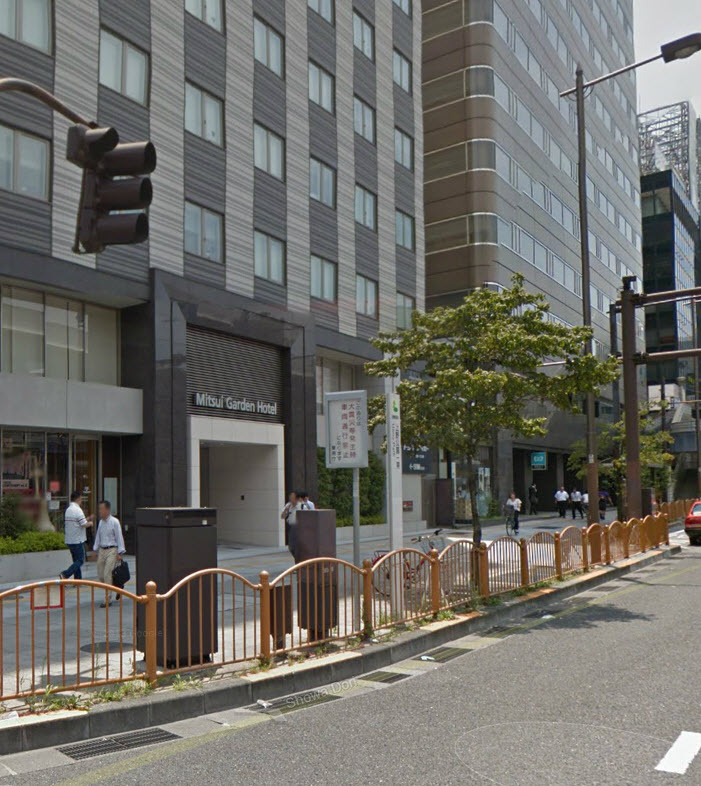
Mitsui Garden Hotel street view
The two of them met us at our hotel, the Mitsui Garden , full of smiles and hugs of welcome. We had no idea what they had planned for the day. All we knew was that Justin scoffed at our original itinerary and said he would do a better job of guiding us than just a trip to the Tokyo Tower.
After confirming that everyone had eaten, we hopped on a subway and headed off. Earlier we had eaten at the hotel, they had a nice breakfast buffet with both Japanese and Western items so we could experiment a bit on breakfast cuisine. For the rest of the day, I was rather disoriented because Akiko and Justin took a lot of shortcuts through buildings and down alleys. I only figured out the orientation looking at our map in the hotel afterwards.
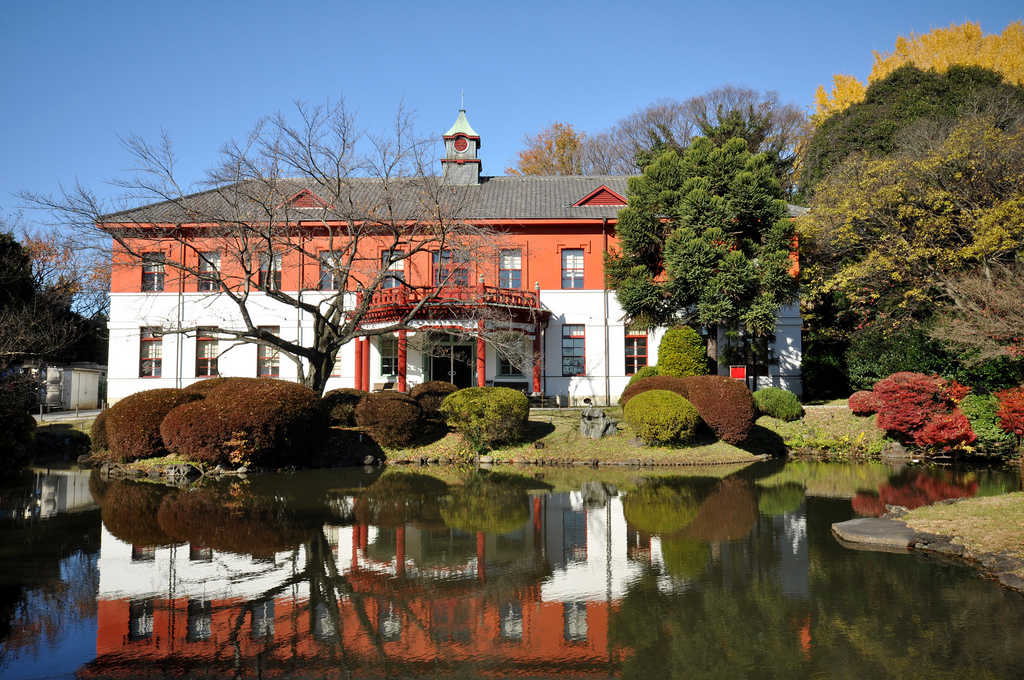
Koishikawa Botanical Gardens
The first stop was especially for Paul, they said. It was called the Koishikawa Botanical Gardens, run by Tokyo University. It wasn’t exceptionally beautiful; the appeal was the variety and importance of the plants. Akiko said that it was the oldest research garden in Japan, and was proud to show us a medicinal garden that was centuries old, with varieties from all over Asia. She said that it was used by the Tokugawa Shoguns.
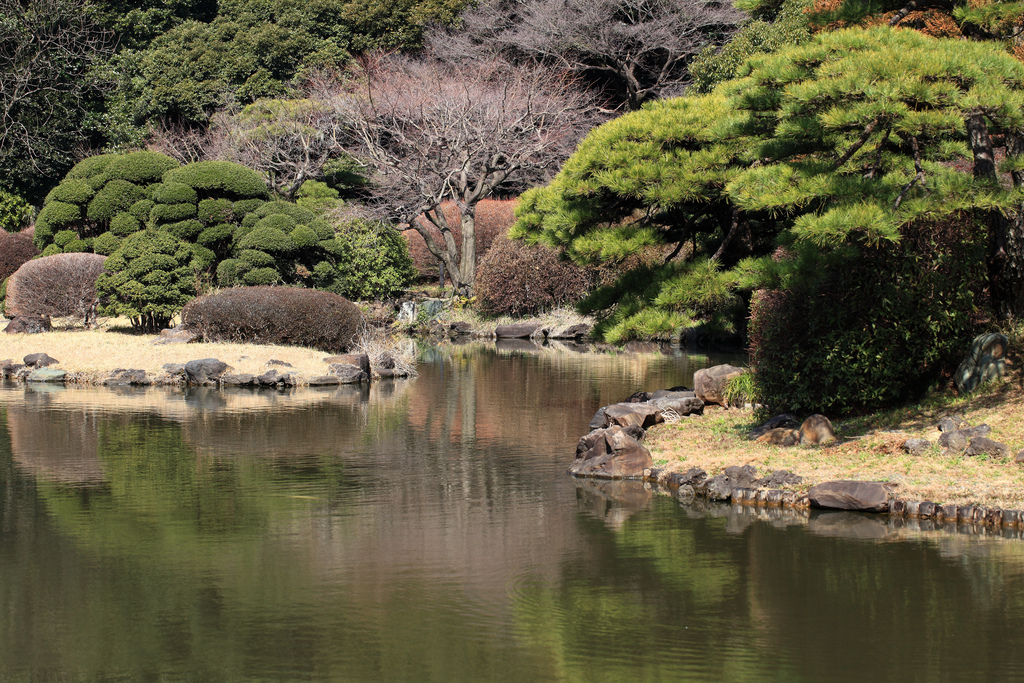
Japanese style garden / 日本庭園(にほんていえん)
Paul raved about everything. I liked a lovely gingko tree because it was pure, glittering yellow, but it turned out to be the one that a famous man bred while researching male and female tree fertilization techniques. There was an asymmetrical pond with big koi in it, and groves of plums and cherries. It was not my idea of a Japanese garden; it had more of the feel of a large park with trees where children would run and play.
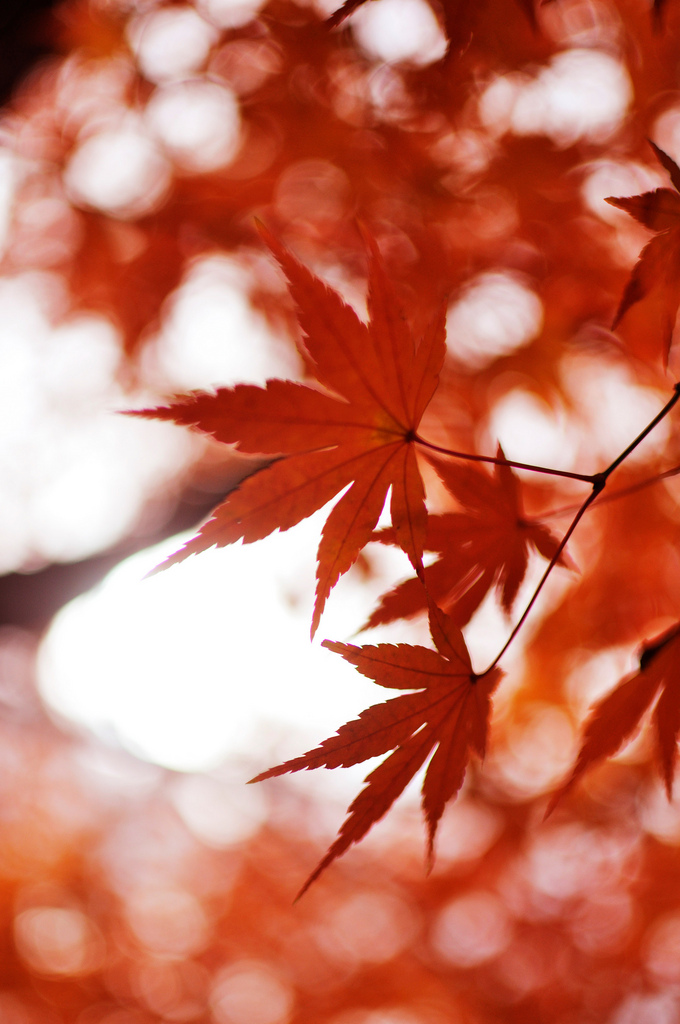
Maple (Koishikawa Botanical Gardens)
Justin kept Paul moving, which was good because I think he could have spent all day jotting in his notebook. Justin’s eyes glittered when he pointed us to a little path and said, “Akiko and I are tired and will rest here. You take that and come back when you are ready.”
We started along the leaf-strewn path, wondering. It was clearly a ruse, but why? Did they want some time alone? We entered the woods, skirted a little streamlet, and suddenly were at the red torii gate of a shrine. It was very small and worn, flanked by mismatched guardian figures perched on rocks. Behind the torii was a very narrow path that looked like it was carved into the side of the hill. Paul and I looked questioningly at each other. He was the first to go in.
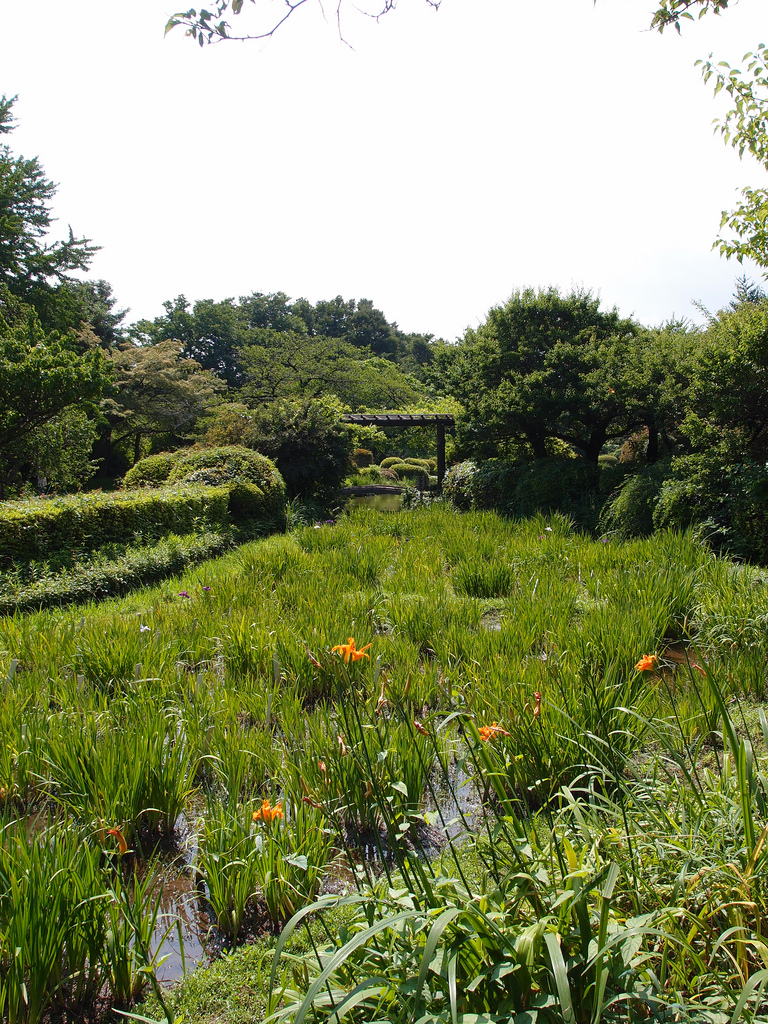
Koishikawa Botanical Garden
The path was barely wider than my body, and the rock seemed to be breathing, all warm and buzzing with insects. There were more guardian figures placed at crazy angles in random clefts in the rock. The path abruptly ended in a wall with a small altar propped at a slight angle with remnants of burnt out candles. Under it was a hole, a cave. There was clearly something living in the darkness.
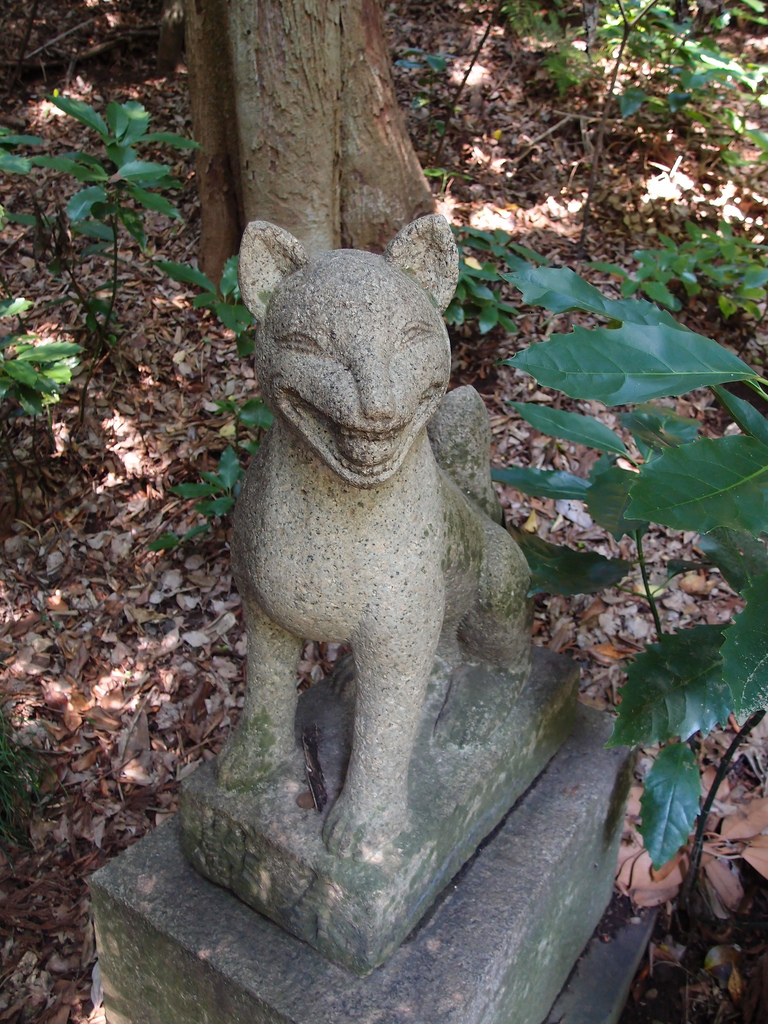
Koishikawa Botanical Gardens fox
Feeling chilled, we backed out and rapidly returned to the sunshine where Justin and Akiko were waiting. “Well, what did you think?”
We didn’t quite know how to answer. The momentary panic I had felt seemed so foolish away from that sinister hole, but Akiko seemed to understand, “We felt the same way, going there the first time. It is a fox den. Amazing, in the heart of Tokyo like this. But people still bring it offerings because, well, you never know.”
Justin just said, “When I go there, I think that magic is still alive. Let’s move on.”
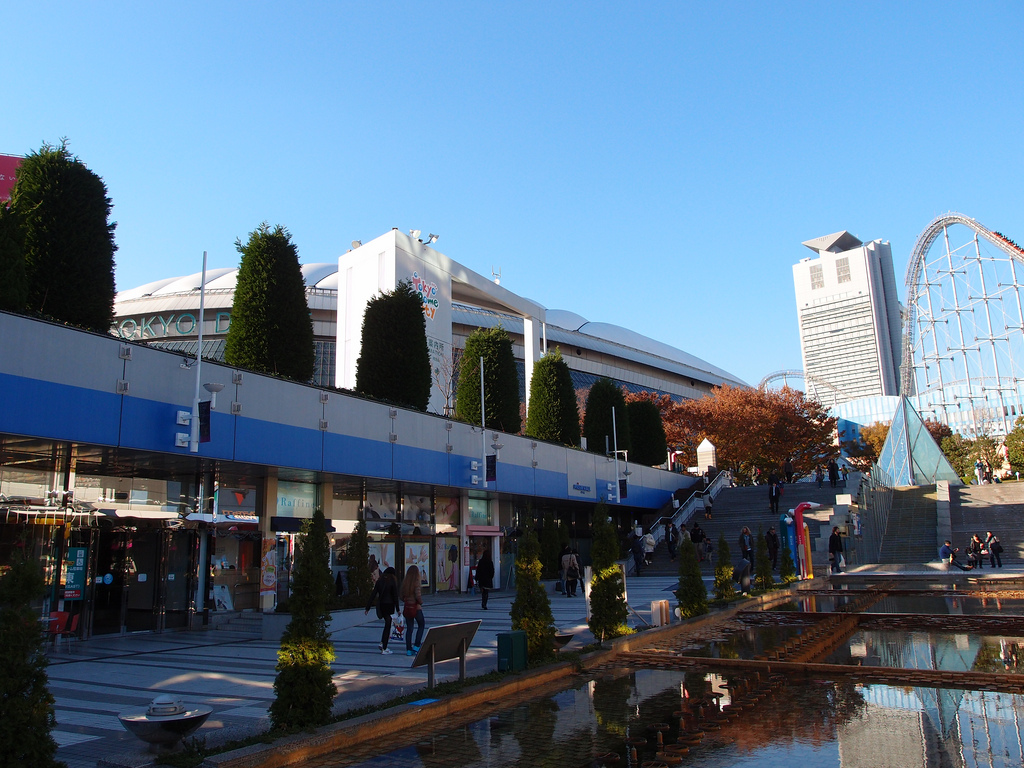
Tokyo Dome City
After making a thorough circuit of the garden, we took another subway to what felt like a different world. It was LaQua in Tokyo Dome City, a huge complex of restaurants, shops, and even an amusement park built up around the Tokyo Dome. Paul regaled us with stories of Yomiuri Giants baseball figures that we have never heard of, while Akiko just smiled and said that they go there a lot. Not just for the games, but for the good food and shopping. There is even a grocery store where they can pick up foreign ingredients that are hard to find in Japan.
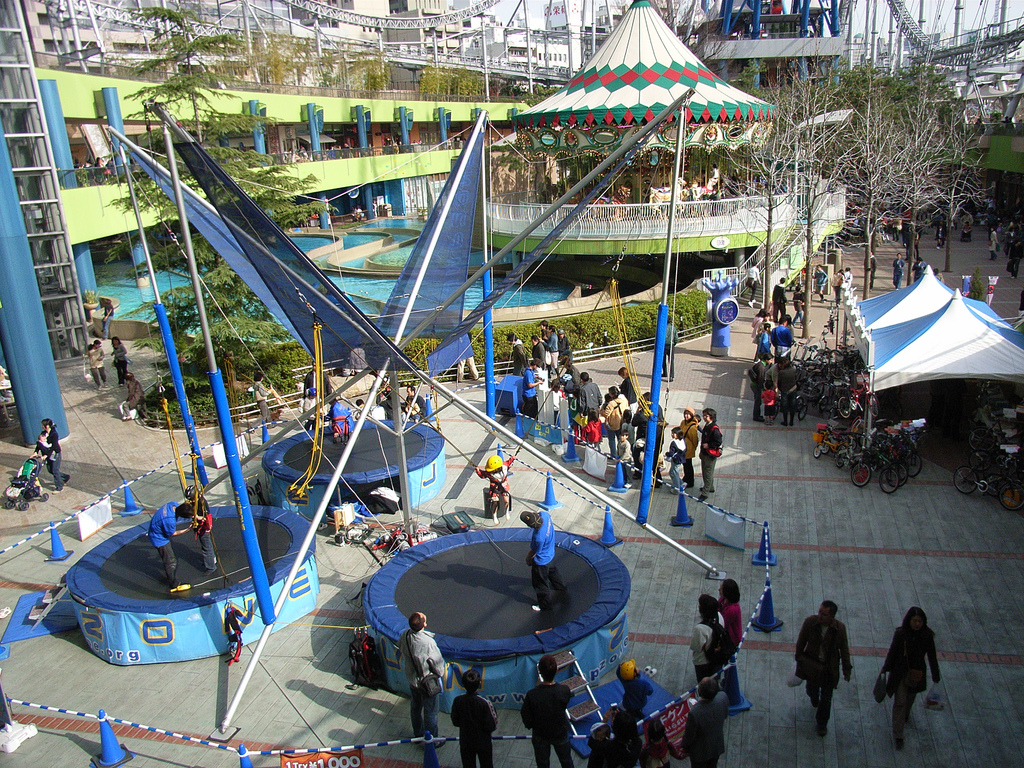
LaQua Courtyard
They led us to a fast-food restaurant that served only takoyaki, which is like little fritters made from octopus. Rather sheepishly Justin confessed that he is addicted to the things, and after trying them, we understood why. They came on a paper boat, piping hot and served with a sweet sauce, seaweed, and flakes of a dried fish that Akiko called katsuo. She suggested we use chopsticks instead of the little toothpicks to spear them. They were delicious, and we easily polished off all the little balls and could have eaten more.
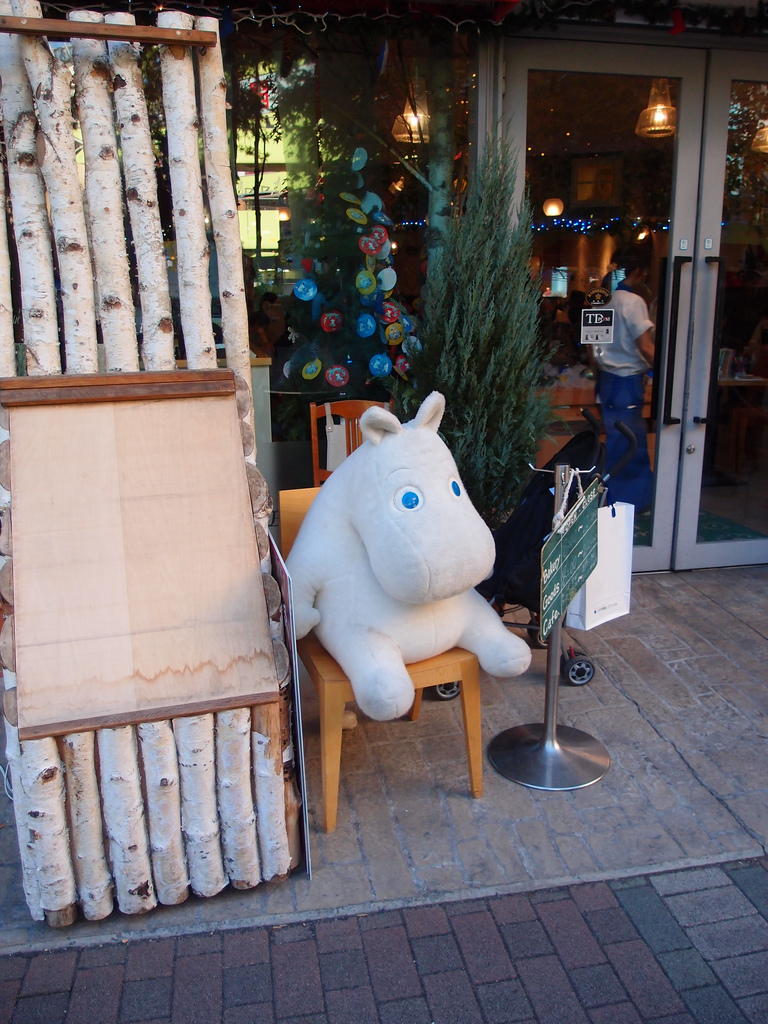
Moomins Cafe @ Tokyo Dome City
We ate in the courtyard at tables in front of the restaurant, Gindaco, and it was a great place for people-watching. It seemed like there was a cross section of all walks of life strolling through. Parents brought children to ride on the carousel near us, and young couples hung out next to the fountain which pulsed with the beat of classical music. Businessmen hurried through, looking very determined about going wherever they needed to go.
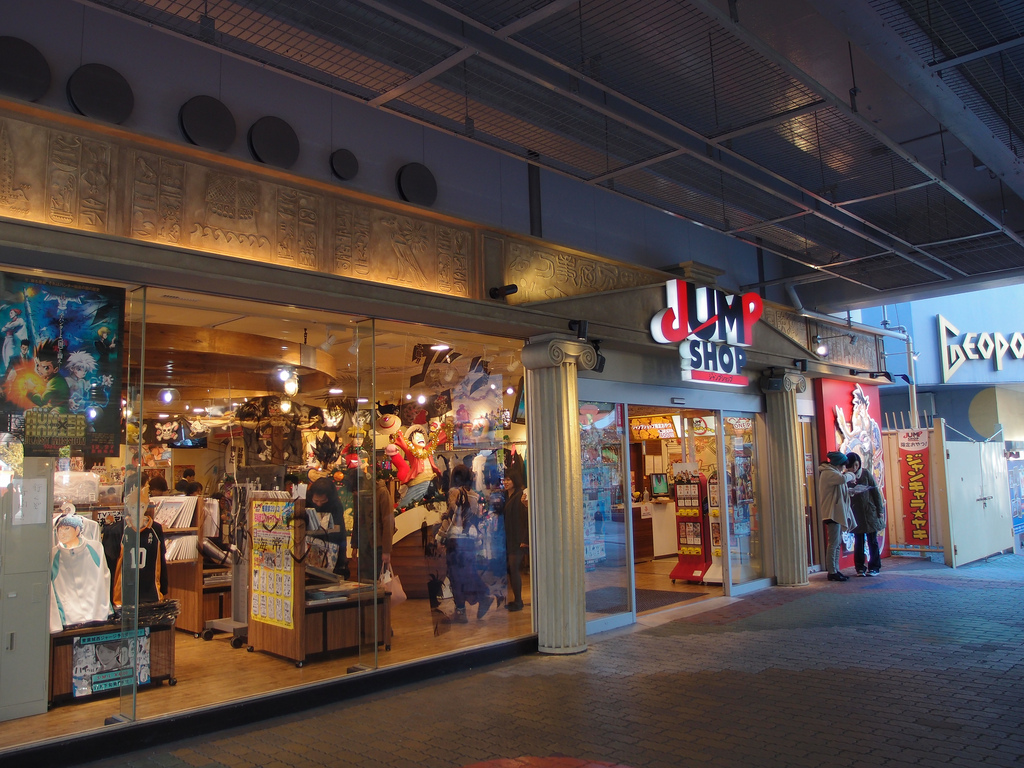
Jump Shop @ Tokyo Dome City
They asked if we wanted to do any shopping, and we replied in the negative. However, Akiko wanted to take me to a special store she thought I might like, the Sanrio store on one of the upper floors. It was a blast of nostalgia, rows of Hello Kitty on every possible item imaginable. I have never been a huge fan of the character, but it was great fun looking at all the clothes and accessories and stationery and housewares. Akiko picked out a pencil box set to give me as a souvenir before we continued on our way.
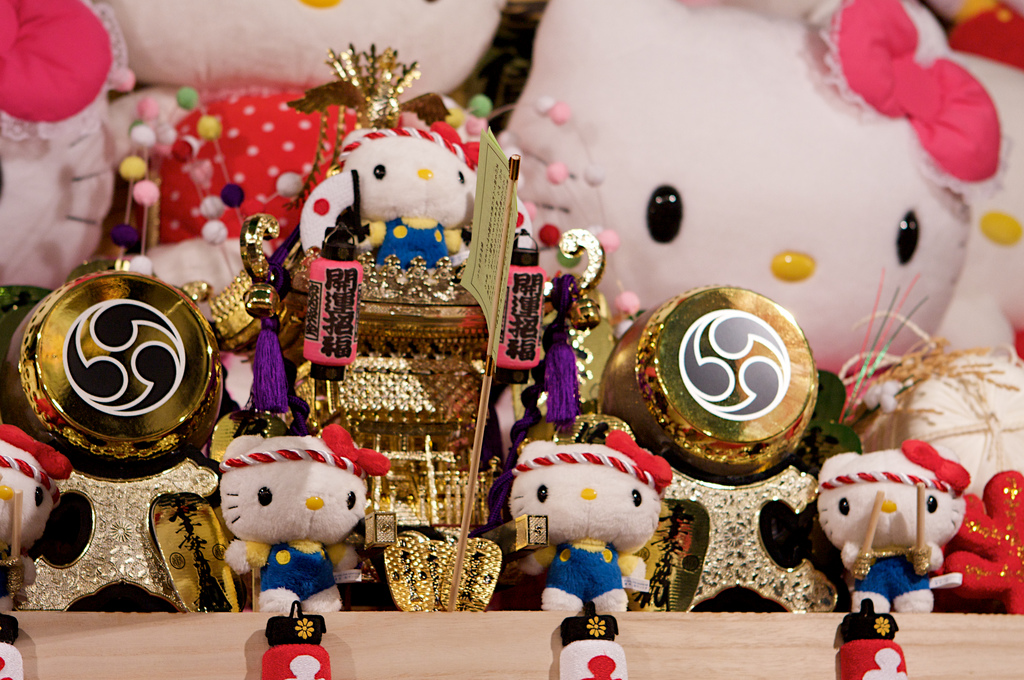
Hello Kitty Festival
Cutting through more buildings and alleys, we reached our next stop, Koishikawa Korakuen Garden. It starts with the same name but is no relation to the first garden we saw; it is an old place name still used in the area. The previous park was interesting on a technical level; this one was pure aesthetics.
We spent the rest of the afternoon roaming through it. Everywhere we looked there seemed to be a new view that was more beautiful than the last. The maple trees were putting on a show of color which balanced with some red flowers that looked like fireworks. There was a pond with rocky islands, so our path mostly went around that, but diverged enough to make the place seem so much larger than it really was.
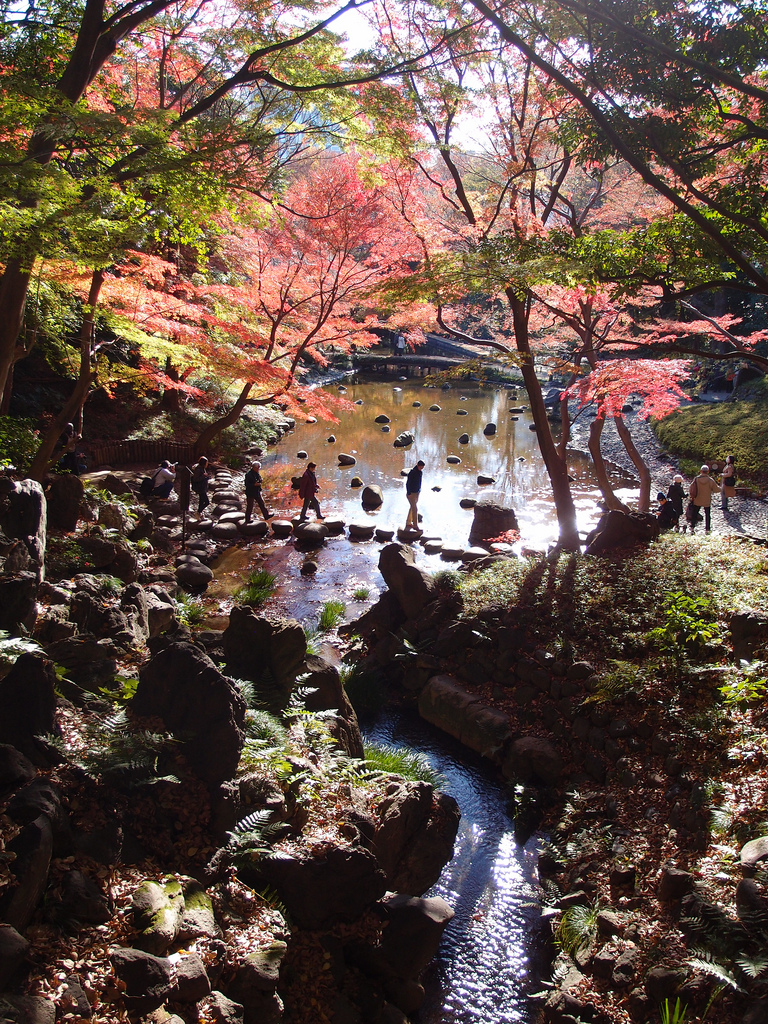
Koishikawa Korakuen Garden Fall Colours
I was charmed by the little turtles in a second pond, supposedly there was a guest house next to it in the Edo period for visitors of the Shogun who owned the garden. In another area there was a perfectly arched “Full Moon Bridge,” but I liked the red lacquer bridge over a little gully better. All of the features referred to classical Chinese poems, Akiko said, and Justin even quoted from some. He always was a better student than I was in college.
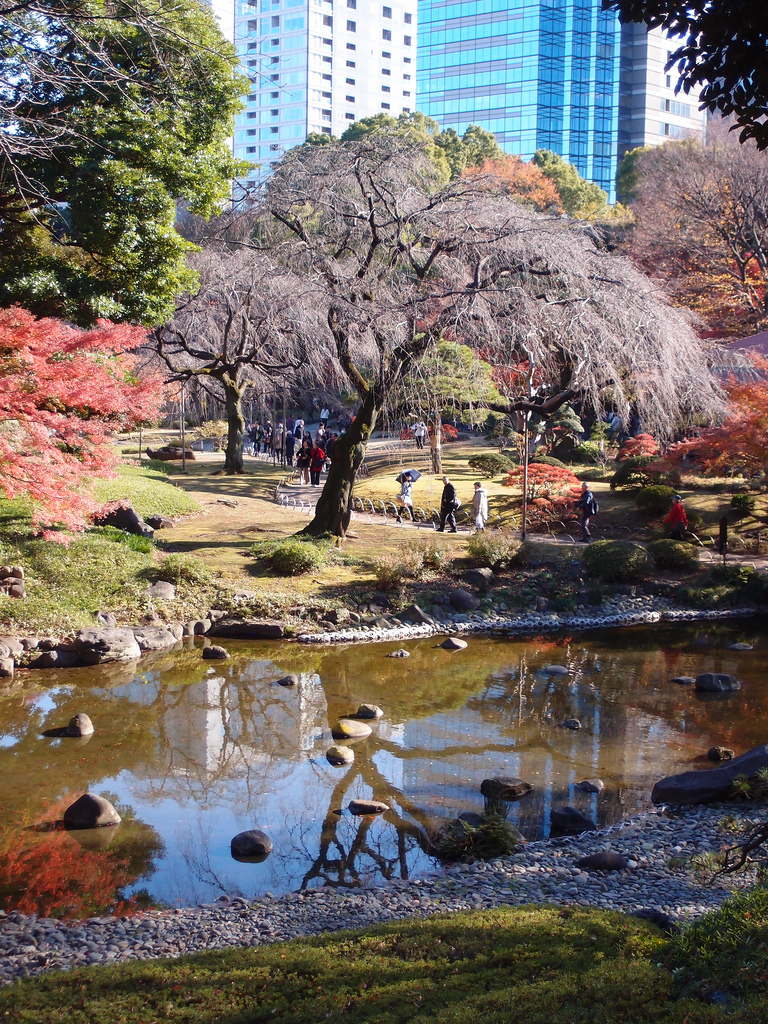
Koishikawa Korakuen Gardens in Autumn
In Japan, there is a classification of “The three most…” of practically everything. The three most beautiful places, tallest mountains, and so on. Justin and Akiko both agreed that though this park is not on the list of the three most beautiful gardens, it should be. Another Korakuen is on the list, but that is in Okayama Prefecture.
It was surprising how few people were there despite the beauty. Justin said that it usually is fairly empty compared to many places in Tokyo, and did not really know why. Paul and I were completely captivated and decided then and there that we would come back again in the spring to see the cherry trees in bloom. There was an especially huge one by the front gate that looked stunning in the photographs.
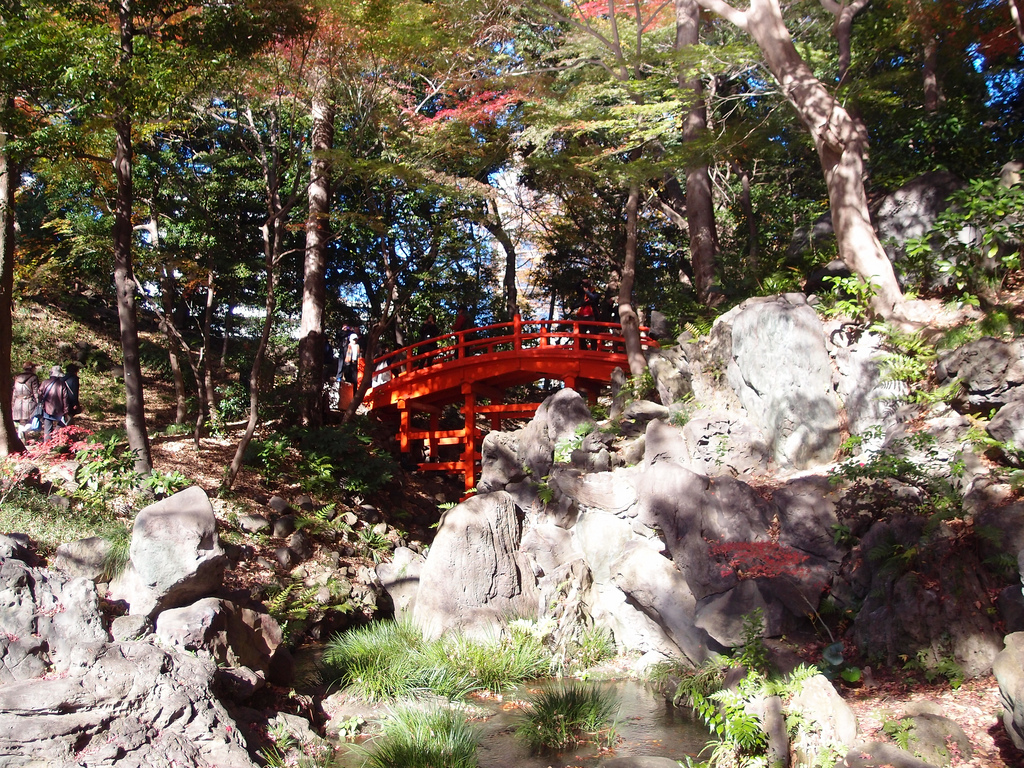
Koishikawa Korakuen Gardens Bridge in Autumn
But our day was not done. Next Justin said he wanted to show off, so we walked a few blocks to the Kodokan, which is the World Judo Headquarters. All of us went inside the unremarkable grey building and hopped onto the elevator. Justin got off at the fourth floor, and Akiko took us up to the eighth. There were seats on all four sides overlooking a central area that opened to reveal the floor below. It was quite a sight, dozens of men clad in white uniforms warming up or sparring. It was my first view of judo in the flesh.
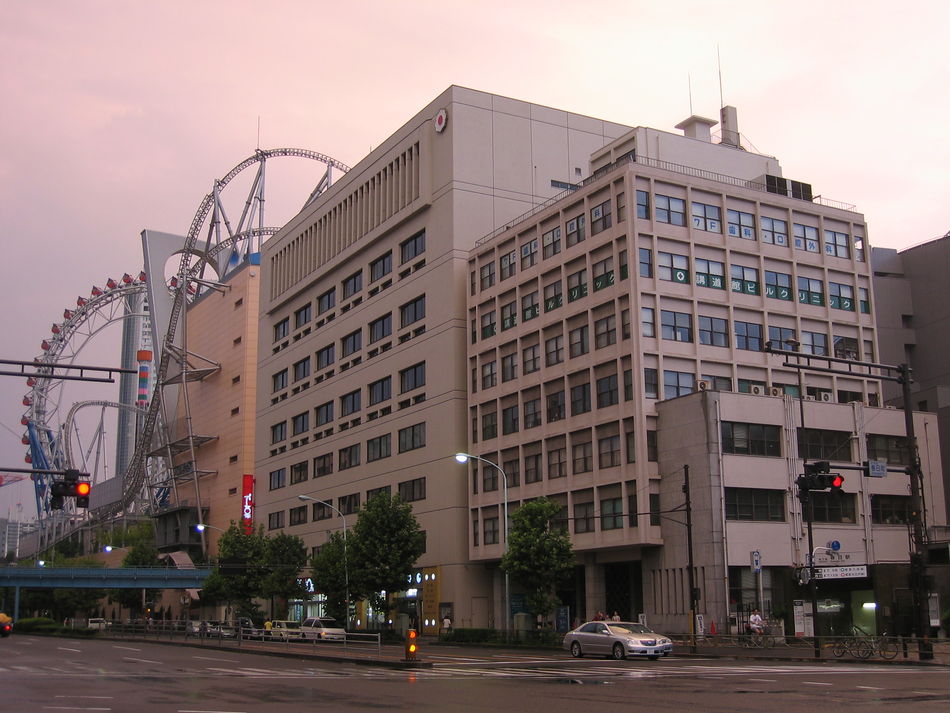
Kodokan with LaQua Tokyto Dome City in background
Akiko explained some of the rules and pointed out Justin when he stepped onto the mat. He had kept it a secret from us, but had gotten his black belt earlier in the year. It was amazing watching him fight, and Akiko said that pretty much everyone else there was much higher ranking, including some of the best fighters in the world. Even so, you could tell she was proud of his accomplishments.
The practice time was free-form, so men paired up, threw each other, did some grappling, or whatever they felt like. There were only a few women, but they fought just as hard as the men. You could feel the energy and smell the sweat just as easily as you could hear the kiai, or yells to summon more power. There was one small lady on the side who caught my attention, and Akiko said that she was blind, a past Paralympic competitor, who practiced regularly despite not being able to see.
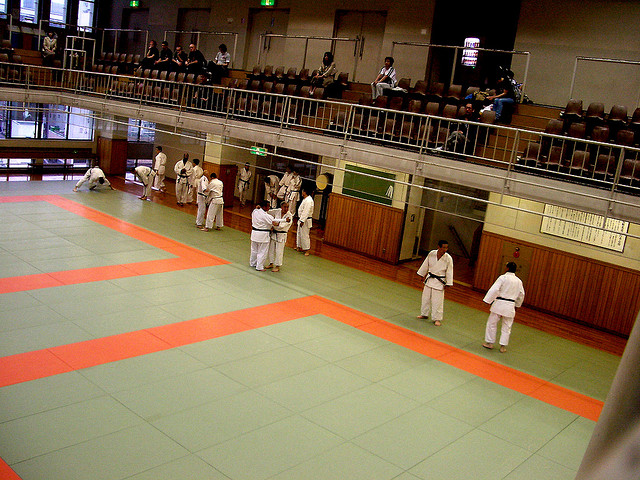
Kodokan Judo (photo: Jaime Pérez/flickr)
On one side, there were several men doing something different. Akiko again provided descriptions. They were doing kata, or formal practice, where they do a set routine that is supposed to be as close to a prescribed ideal as possible. The kata contain moves that are too dangerous for the freestyle sparring, the moves from samurai times that the founder wanted to preserve. In this case, they were using a wooden knife and sword, and the moves of the man stopping the attacker were short, abrupt, and looked lethal. It turned out that they were guards from the Imperial Palace who practice regularly at the Kodokan. When Paul and I expressed amazement, Akiko pointed out several other men who are in the Tokyo Metropolitan Police.
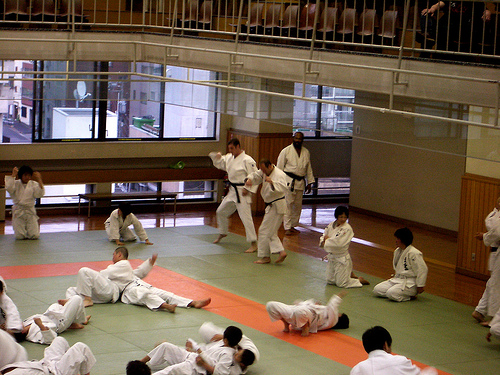
Finally the practice was over and we waited in the lobby for Justin to shower and change. He sure looked worn out but happy. The other men exchanged greetings with him as they left, and I realized that he belonged here in Japan despite being a foreigner. By speaking the language and participating in a regular activity, he was accepted by the people around him. I was a bit jealous; it was clear our treatment as tourists was different.
But the day was not quite over. We walked to another building, a tall one that we had noticed earlier in the day. It was the Bunkyo-ku Civic Center, and though most of the offices were now dark, we rode the elevator to the top, the 25th floor where there was an observation deck free to the public.
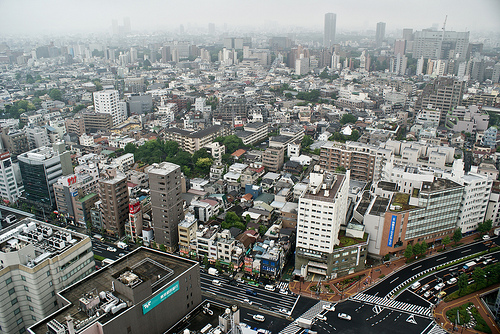
The view was breathtaking. I knew that Tokyo was big, but seeing the streets stretching out in lines, melting into masses of lights blinking as far as the eye could see, really gave a hint of the scale. It was a bit overwhelming, yet also beautiful.
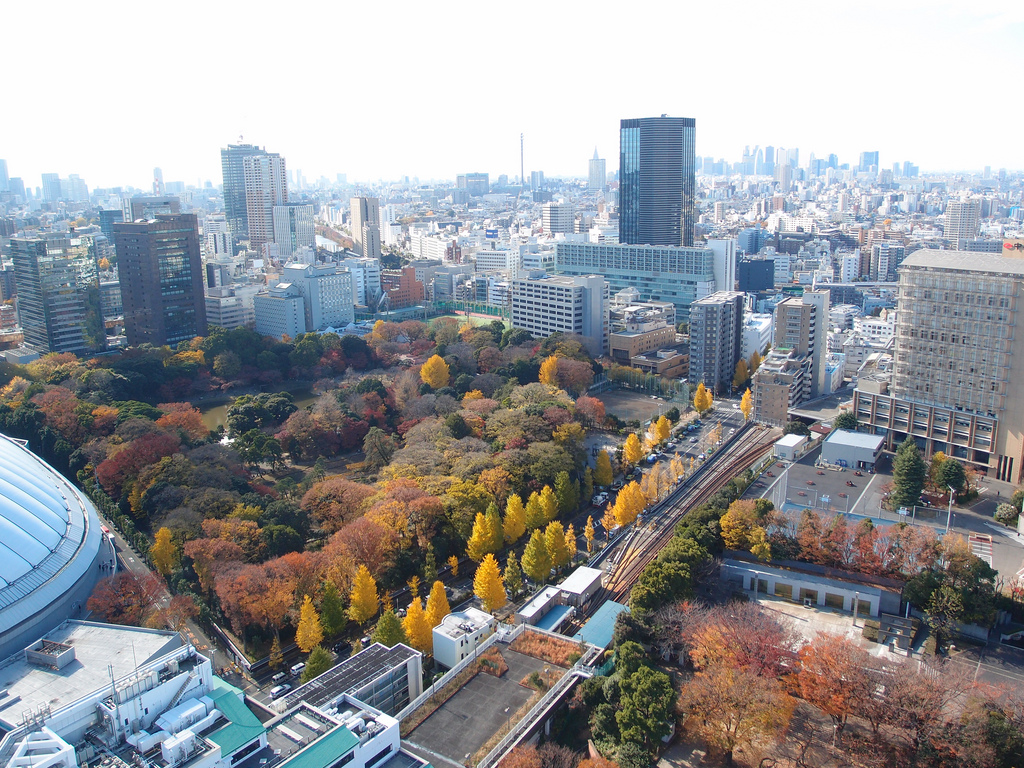
Bunkyo-ku Civic Center View in Autumn (photo: Guilhem Vellut)
Our tour ended with a lovely dinner in the restaurant that takes up one side of the observation floor, the Chinzan-so. We sat next to a window with a view of Tokyo Bay, and we enjoyed the meal served in lacquer boxes that Akiko recommended. She confessed that it was very good, but not the greatest, Japanese food around, but we found nothing to complain about. They like taking guests here because it is reasonably priced and has a spectacular view.

シビック スカイレストラン椿山荘 Chinzan-so Restaurant
At last we parted ways, and it was hard to say goodbye. They encouraged us to come back to Japan again, and we knew in our hearts that we were not lying when we said that we would. It certainly was a better day than just visiting the Tokyo Tower!
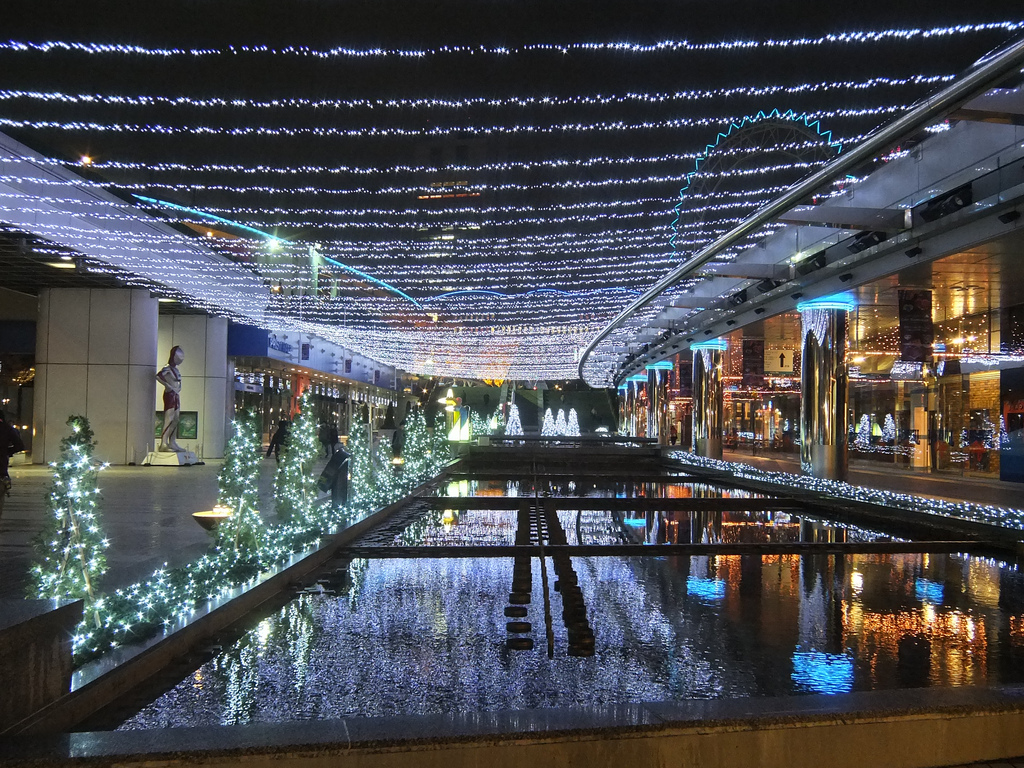
Tokyo Dome Crystal Avenue (photo: HAMACHI!)
 photos by:
kanegen &
TANAKA Juuyoh (田中十洋),
kanegen,
*_*,
*_*,
*_*
photos by:
kanegen &
TANAKA Juuyoh (田中十洋),
kanegen,
*_*,
*_*,
*_*